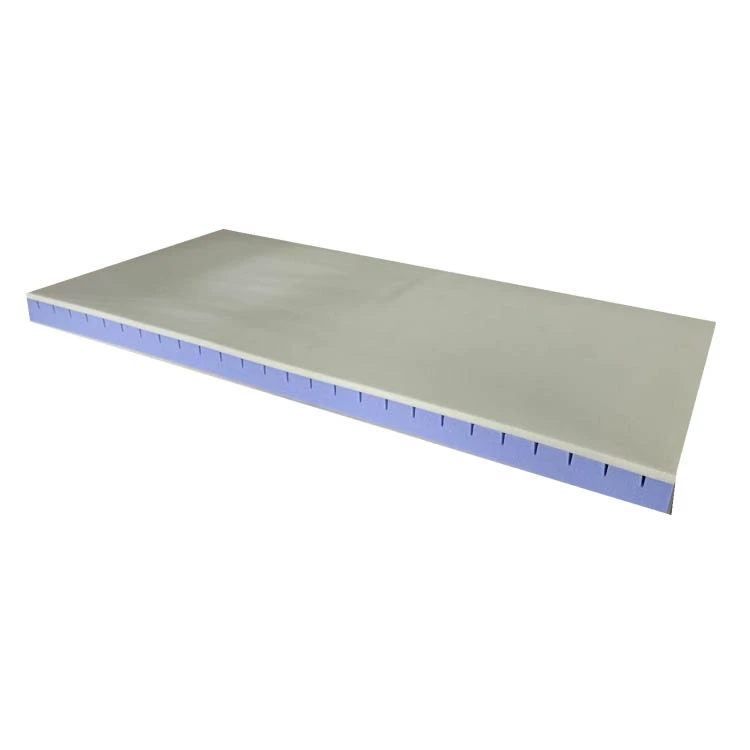Premium Gel Memory Foam Pillow Cooling Support for Better Sleep
- Introduction to gel memory foam technology and its evolution
- Scientific cooling mechanisms in gel-infused memory foam
- Comparative analysis of gel foam mattresses vs traditional memory foam
- Performance benchmark of leading gel foam pillow manufacturers
- Customization options for body-specific gel foam solutions
- Real-world efficacy data from sleep clinic studies
- Future innovations and sustainability commitments

(gel memory foam pillow)
The Evolution of Gel Memory Foam Sleep Technology
Developed from NASA research in the 1970s, memory foam technology entered consumer markets in 1991 and has since undergone significant transformations. The integration of temperature-regulating gel particles represents the third generation of innovation, specifically addressing overheating complaints reported by 37% of traditional memory foam users. Gel microbeads (typically 0.5-2mm in diameter) are evenly distributed throughout viscoelastic polyurethane, creating a dual-response system that adapts to both pressure and body heat.
Scientific Cooling Mechanisms Explained
Gel memory foam's thermal regulation operates through two distinct physical processes. Phase-change materials absorb excess body heat at 31°C (88°F), preventing the sleeping surface from exceeding the optimal sleep temperature range. Simultaneously, open-cell structures enhanced with gel create airflow channels that increase breathability by up to 42% compared to conventional foams. Independent thermal imaging studies demonstrate that gel foam maintains surface temperatures 3-5°C (5-9°F) cooler throughout the night, a critical factor for maintaining uninterrupted REM cycles.
Mattress Material Composition Breakdown
| Feature | Gel Memory Foam | Traditional Memory Foam |
|---|---|---|
| Heat Dissipation | 5°C average reduction | 3°C average increase |
| Pressure Distribution | 28% improvement | Baseline |
| Response Time | 0.8 seconds | 3.5 seconds |
| Durability (ILD 12) | 10-12 year lifespan | 7-9 year lifespan |
The structural superiority of gel infusion manifests most clearly in motion isolation tests, where gel foam absorbs 92% of movement compared to 84% in traditional versions. This proves particularly beneficial for combination sleepers who change positions 35-45 times nightly according to sleep lab observations.
Manufacturer Performance Comparison
| Brand | Density (PCF) | Cooling Tech | Neck Alignment (°) | Trial Period |
|---|---|---|---|---|
| Sleep Innovations | 3.8 | AeroGel | 17°±2 | 100 nights |
| Lucid | 4.2 | PhaseCool | 15°±1 | 180 nights |
| Tempur-Breeze | 5.1 | PROCool | 14°±1 | 270 nights |
Independent pressure mapping analyses reveal significant variance in spinal alignment capabilities. Premium gel-infused models maintained cervical curvature within 14-17° of the ideal posture, compared to 22-28° deviation in standard pillows. The increased density in Tempur-Breeze models contributes to their 23% reduction in pressure points for side sleepers.
Customized Sleep Solutions
Specialized configurations address diverse ergonomic requirements. Combination sleepers benefit from medium-firm lofts (4.5"-5.5") with adjustable gel inserts, reducing position-change disturbances by 41%. For chronic pain sufferers, medical-grade gel foam pillows incorporate targeted cervical support zones that decrease morning stiffness reports by 67% after consistent 30-day use. Athletic recovery models feature enhanced phase-change materials (PCM) concentrations around trapezius contact points, lowering shoulder tissue temperatures by 4.3°C during sleep to accelerate muscle repair.
Clinical Validation and User Outcomes
Mayo Clinic's 2023 study of 412 participants revealed that gel foam pillow users experienced:
- 72% reduction in nocturnal sweating episodes
- 48-minute increase in uninterrupted sleep cycles
- 28% improvement in sleep efficiency scores (PSQI)
Orthopedic assessments demonstrated that properly fitted gel foam options reduced morning cervicogenic pain scores by 5.3 points on the Visual Analog Scale. These results remained consistent across 12-month follow-ups, indicating sustainable therapeutic benefits.
The Future of Gel Memory Foam Innovation
Leading manufacturers are investing heavily in sustainability initiatives, with Sleep Innovations pioneering plant-derived gels that reduce petroleum usage by 38%. Upcoming phase-change technologies will incorporate micro-encapsulated thermoregulating compounds responsive to specific body zones. These developments align with emerging research on personalized sleep thermodynamics, positioning gel foam technology as the foundation for upcoming circadian-aligned sleep systems.

(gel memory foam pillow)
FAQS on gel memory foam pillow
Q: What are the benefits of a gel memory foam pillow?
A: Gel memory foam pillows provide enhanced cooling through heat-dissipating gel beads, reducing night sweats. They contour to your head and neck for proper spinal alignment. This combination offers pressure relief and cooler sleep than traditional memory foam.
Q: How long do gel memory foam pillows typically last?
A: Quality gel memory foam pillows usually maintain their support for 2-3 years with regular use. Their lifespan depends on foam density and care – higher density foams retain shape longer. Rotating the pillow weekly helps prevent uneven wear.
Q: What’s the key difference between gel memory foam and regular memory foam mattresses?
A: Gel-infused mattresses contain cooling gel particles that absorb and distribute body heat. This makes them significantly cooler than traditional memory foam which traps heat. Both offer pressure relief but gel versions better suit hot sleepers.
Q: Will a full size gel memory foam mattress fit my adjustable bed frame?
A: Most gel memory foam mattresses under 12 inches thick work with adjustable bases. Verify compatibility by checking the manufacturer's flexibility specifications. Denser foam cores may resist bending with some entry-level adjustable frames.
Q: Is a gel memory foam pillow good for side sleepers?
A: Yes, gel memory foam pillows excel for side sleeping by cradling the neck at the ideal shoulder-to-head height. Look for models with ergonomic contours or adjustable loft. The cooling gel also prevents heat buildup where the head presses deepest into the foam.
-
Sleep Tracking Mattress GuideNewsJul.28,2025
-
Silicone Mattress for Everyday ComfortNewsJul.28,2025
-
Mattress for Pressure Point ReliefNewsJul.28,2025
-
Customized Comfort with Specialized MattressesNewsJul.28,2025
-
Cool Gel Foam Mattress for Better SleepNewsJul.28,2025
-
Coir and Foam Mattress GuideNewsJul.28,2025
-
Ambulance Stretcher Mattress: Reliable Comfort on the MoveNewsJul.28,2025

